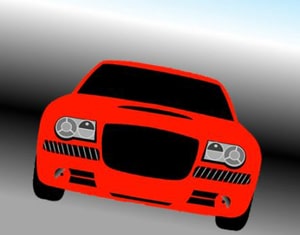IELTS Listening Practice Hybrid Cars IELTS Listening Practice Hybrid Cars About this activity This activity is labeled round table by Dr. Hariri, the creator and administrator of LELB Society. This activity is on the premise of Flipped Learning, according to which the students watch a video before the class, carry out research into the selected theme, and prepare themselves for an informed discussion in the class. This activity is on the basis of both synchronous and asynchronous computer-mediated communication (CMC), according to which the students are also encouraged to be active even before the class. In this flipped classroom activity, the students are encouraged to utilize the comment form at the bottom of the post to to exchange their questions, findings, and experiences with each ...
Home » Listening Practice in English » IELTS Listening Practice Hybrid Cars

IELTS Listening Practice Hybrid Cars
Updated: by Dr. Mohammad Hossein Hariri Asl
Time to Read: 5 minutes | 285 Views | 12 Comments on IELTS Listening Practice Hybrid Cars
Share This Post
About the Author
Dr. Mohammad Hossein Hariri Asl is an English and Persian instructor, educator, researcher, inventor, published author, blogger, SEO expert, website developer, entrepreneur, and the creator of LELB Society. He's got a PhD in TEFL (Teaching English as a Foreign Language).
Number of Posts: 4223



7. What are the design techniques of hybrid cars in order to run at the maximum efficiency?
Hybrid cars employ several design techniques to achieve maximum efficiency:
1. Regenerative Braking: This system captures energy usually lost during braking and stores it in the battery for later use.
2. Aerodynamic Design: Hybrids are often designed with sleek, smooth shapes to reduce wind resistance and improve fuel efficiency at higher speeds.
3. Low Weight: Using lightweight materials helps reduce the overall weight of the vehicle, requiring less energy to move.
4. Energy Management Systems: Advanced systems manage the flow of energy between the electric motor and the combustion engine, optimizing performance and efficiency.
5. Optimization Algorithms: These algorithms help in fine-tuning the vehicle’s performance under various driving conditions.
6. How long have hybrid cars been working on Canada’s roads?
Hybrid cars have been on Canada’s roads for over two decades. The first hybrid vehicle introduced in North America was the Honda Insight, which debuted in December 1999. Since then, hybrid technology has become increasingly popular, with many models from various manufacturers, including Toyota’s Prius, which has been available in Canada since 2000. Over 200,000 hybrid vehicles have been sold in Canada since 2000.
5. Explain the mechanism of regenerative braking.
4. How can hybrid cars’ batteries last for the entire lifespan of these vehicles?
3. What is the meaning of “The Best of Both Worlds”?
“The Best of Both Worlds” refers to a situation where someone can enjoy the advantages or benefits of two different, often contrasting, things at the same time. For example, having a hybrid car offers the best of both worlds by combining the fuel efficiency of an electric vehicle with the longer range and convenience of a gasoline engine. It’s like having the ideal mix of two desirable qualities, without having to compromise on either.
2. What are the jobs of the internal combustion engine in hybrid cars?
In hybrid cars, the internal combustion engine (ICE) performs several important functions:
1. Primary Power Source: The ICE provides the main source of power for the vehicle, especially at higher speeds and during demanding driving conditions, such as highway driving or accelerating quickly.
2. Battery Charging: The ICE can also act as a generator to recharge the vehicle’s battery pack, especially when the charge level is low. This allows the electric motor to be used more efficiently and extends the overall range of the vehicle.
3. Boosting Performance: In some hybrid systems, the ICE works in tandem with the electric motor to provide additional power during acceleration or when climbing steep inclines, ensuring smooth and powerful performance.
4. Maintaining Efficiency: By switching between the electric motor and the ICE as needed, hybrid cars optimize fuel efficiency and reduce emissions. The ICE can turn off when not needed, such as during idling or low-speed driving, relying on the electric motor instead.
1. What is the essential idea of hybrid vehicles?
The essential idea of hybrid vehicles is to combine the strengths of both internal combustion engines and electric motors to create a more efficient, environmentally friendly mode of transportation. By integrating these two power sources, hybrid vehicles can optimize fuel consumption, reduce emissions, and improve overall performance.